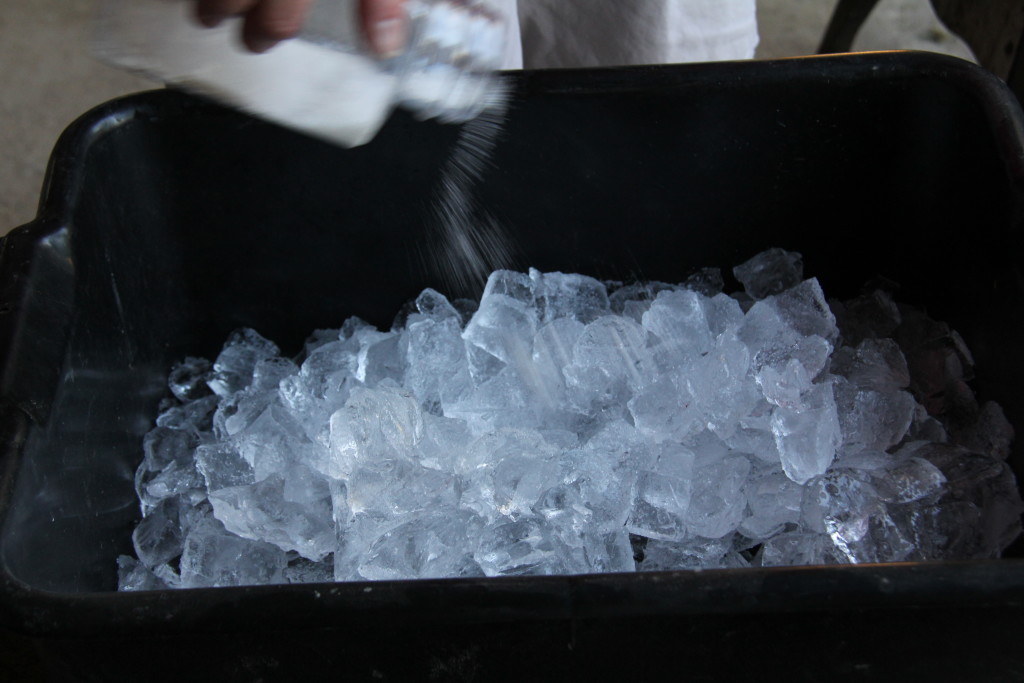Lesson Learned: Making Ice Cream in a camp Dutch Oven is difficult!
After several attempts, I have concluded that making ice cream outdoors in the middle of Texas summer has to be one of the most difficult recipes to successfully prepare. Truly.
I made several mistakes over the course of several attempts to make Brown Butter Pecan ice cream in our outdoor kitchen. GRRR! I put a lot of time, ingredients, and sweat into making each batch of ice cream, only to blow it, big time, several times. I cleaned up each mess and sat down to make notes of what went well and where I goofed. I also posted a question about how to make ice cream on the Camp Dutch Oven Cooking Facebook group and received several very helpful tips. Here’s what I have learned so far.
Making the custard is easy. Making brown butter is not. 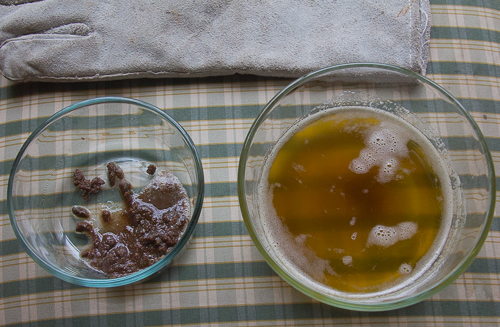
Making the custard truly is the easiest part of this process! But making brown butter in a camp Dutch oven is not easy at all. Tasting Table‘s recipe for Brown Butter Pecan ice cream starts with turing a 1/2 cup of butter into beurre noisette or brown butter. I put the butter into a small camp Dutch oven that sat over 9 hot charcoals and diligently stirred until the butter bubbled up and then I noticed tiny brown bits floating on top of the froth and I could smell the lovely nutty aroma of the butter – it was ready! I removed the oven from the hot charcoal, but I didn’t have heat-tolerant bowl to pour the hot butter in. By the time a minute passed and I found a bowl, the milk solids had turned dark brown, even off of the heat (see above). Bitter, not lovely – ackkkk. Lesson learned: as soon as the butter turns brown (see below), pour it out of hot oven into a bowl. (For more detailed explanation of how to prepare brown butter, check out Cooking Light‘s helpful info.) 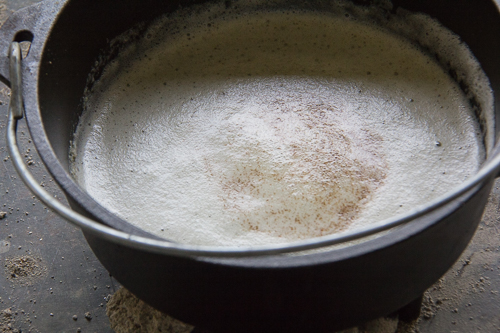
Rock Salt, not table salt, and A LOT OF IT.
Table salt or Kosher salt can’t do the job that rock salt does to freeze the custard into ice cream. Rock salt causes the ice to melt quickly, resulting in a brine that maintains a temperature of 8 degrees to 12 degrees. This salty solution rapidly absorbs the heat from the ice-cream mixture, which will start to freeze at 27 degrees. Lesson learned: one cup of rock salt for every five cups of ice and make sure to use rock salt, not table salt.
No ice or salt on the lid. Add barriers to protect the custard.
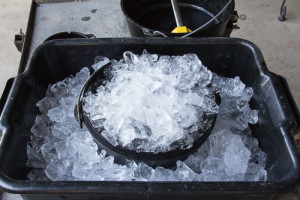 We were in a rush and didn’t think about the consequences of putting salty ice on the lid. The first time we removed the lid, several chunks of ice fell into the ice cream along with a few splashes of salty water. I cried.
We were in a rush and didn’t think about the consequences of putting salty ice on the lid. The first time we removed the lid, several chunks of ice fell into the ice cream along with a few splashes of salty water. I cried. 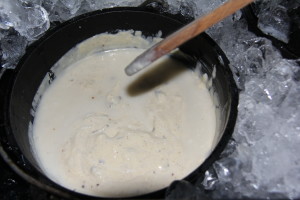 This batch was ruined. Lesson learned: Do not put any ice or salt directly on the lid. Instead, put the ice in a zip bag (check to make sure it is sealed tightly and doesn’t have any holes.) Add a protective barrier of foil or plastic wrap between the lid and the oven so that a stray piece of ice or drop of water falls can be easily removed. Also, have a dry towel ready to quickly blot up any liquid that may fall on the lid or foil.
This batch was ruined. Lesson learned: Do not put any ice or salt directly on the lid. Instead, put the ice in a zip bag (check to make sure it is sealed tightly and doesn’t have any holes.) Add a protective barrier of foil or plastic wrap between the lid and the oven so that a stray piece of ice or drop of water falls can be easily removed. Also, have a dry towel ready to quickly blot up any liquid that may fall on the lid or foil.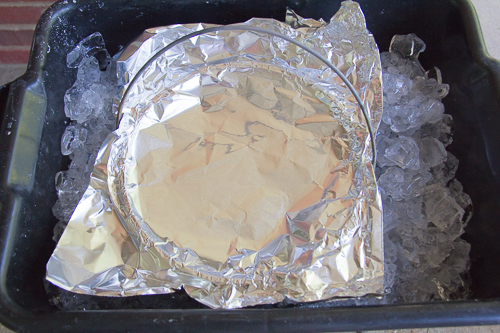
The final lesson I have learned is that making ice cream freeze outdoors in hot Texas summer is almost impossible. The temperature outside in the shade has been between 90 and 95, a mighty difficult environment for creating an ice cold dessert. Despite our best efforts after three hours, the last batch of ice cream was thick and sludgy, but not hard and “scoop-able.” The only other option is to use dry ice, which requires a special container and configuration to protect the cast iron from the extreme cold created by dry ice. I will give it one more try with hopes of success and share the recipe, so stay tuned.
I want to thank all of our Dutch oven friends on the Camp Dutch Oven Cooking Facebook group for helpful comments and suggestions, especially Omar Alvarez, Kenny Garret, and Peter Langston.
P.S. The last batch we made would not set up and harden, so we put the cold but soupy custard into our ice cream maker and in minutes it was hard and creamy and OH so good! Thankfully, this batch was not at total failure. We love brown butter pecan ice cream!!

